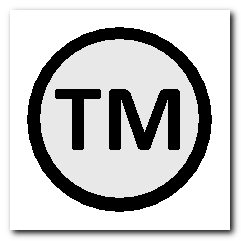 Most entrepreneurs and business owners generally understand the concept that applying for trademark registration with the United States Patent and Trademark Office (USPTO) is an important step toward building the business and protecting its image and goodwill. However, at least in my experience, these same people also tend to have certain common questions and misconceptions about the trademark registration application process, and the true benefits of federal trademark registration.
Most entrepreneurs and business owners generally understand the concept that applying for trademark registration with the United States Patent and Trademark Office (USPTO) is an important step toward building the business and protecting its image and goodwill. However, at least in my experience, these same people also tend to have certain common questions and misconceptions about the trademark registration application process, and the true benefits of federal trademark registration.
In order to increase their chances of success in applying for trademark registration, business owners and entrepreneurs should educate themselves about the registration application process and the benefits of trademark registration. In particular, before applying for trademark registration with the USPTO, business owners and entrepreneurs should consider the following key issues (many of which, incidentally, must also be addressed in the trademark registration application itself), and be prepared to provide answers to these questions to their trademark attorney:
- Words, Design, Colors. It may seem obvious, but first and foremost it is important to know what exactly your trademark is. Are you going to claim exclusive rights in words only? In a graphic logo only? In a combined word-design logo? In the words independently, and also in the word-design combination? Is color an important feature of the trademark that you want to seek to protect?
- Date of First Use. If your company has already started using the trademark on its products or services, when did it start doing so? Has it started using the trademark at all? If not, an “intent-to-use” application can be used to protect the trademark before the company’s products or services go on the market.
- “Bona Fide” Intent. For “intent-to-use” trademark applications, the applicant must certify that it has a “bona fide” intent to make use of the trademark in commerce. This prevents companies from snatching up would-be trademarks solely in order to prevent their competitors from doing so first. If you have bona fide intent, when will the product or service be ready to launch? Intent-to-use trademark applications require supplemental filing of a “specimen” showing how the trademark is actually being used in commerce before the USPTO will issue a trademark registration certificate.
- Products and Services. What products or services does your company sell under the trademark? Many people do not realize that trademark registration with the USPTO provides protection only with respect to the “classes” of goods or services covered by the trademark registration application. Protection of a trademark in multiple classes of goods or services will require submission of duplicate (triplicate, etc.) filing fees—or additional registration applications over time as the business grows.
- Ownership. This, too, may seem obvious, but ownership can be difficult to discern in certain circumstances —or at least require some basic legal footwork. If you operate as a sole proprietor or single-member, LLC, do you or your company own the trademark? If you hired a design firm, does the contract provide for ownership by your company? If your company acquired the assets of a pre-existing business, does the asset purchase agreement appropriately address trademark rights?
- Is it Actually a Trademark? Many times business owners will have a misconception of whether a word or phrase they use in their business actually constitutes a trademark capable of legal protection and registration with the USPTO. Generally speaking, trademarks must be adjectives—not nouns or verbs. They must be indicative of the source of the company’s products or services. This does not mean that they must mirror the company name itself, but rather that they must reflect a unique source point or service offering. If your company uses the trademark as a product or service name or non-generic identifier, it will generally be capable of obtaining trademark registration with the USPTO.
- Is Anyone Else Using a Confusingly Similar Trademark? Finally, and most important in many (if not all) respects, is knowing with a reasonable degree of confidence whether or not some other company has already claimed prior rights in your proposed trademark. This knowledge is obtained through performing trademark clearance research to survey the market and previous USPTO trademark filings to discover whether and to what extent other companies have already claimed exclusive rights in similar trademarked words or designs. Importantly, it is not enough that there are no identical trademarks on the market—the question is whether there is a “confusing similarity” in the relevant product or service markets.
With answers to these questions in hand, trademark owners can make an informed decision about how and when to file for trademark registration. Ultimately, by building a solid trademark portfolio, companies can better position themselves both in the competitive marketplace and as a viable acquisition target.
Jeff Fabian is the owner of Fabian, LLC, a law firm that assists business owners in protecting their brands so that they can stay focused on running their businesses. Jeff is also a founding member of TrademarkIntel, LLC, developer of the innovative TMIntel™ online software application for conducting your own instant trademark clearance research.
